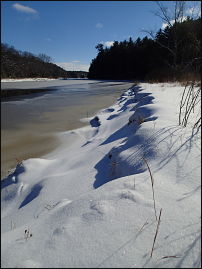When it’s this cold outside, it can help to look for the beauty in the harshness. Hannah shares some interesting, little-known facts about snowflakes.
From blizzard-like snowfalls to frigid subzero temperatures, January 2019 has given Wisconsinites more than one reason to bemoan winter and dream of fairer weather. Yet for anyone willing to pause and gaze out a window or go for a brief walk outdoors (while thoroughly bundled, of course), winter offers a unique seasonal beauty.
When you think of unique, what comes to mind? Maybe your fingerprint or the faces of all the people you pass in a day. Or maybe, like Wilson Bentley, you may think of snowflakes. Born in 1865, Bentley used his ingenious combination of a microscope and camera to take the first known picture of a single snow crystal in 1885. His lifetime of work with snowflakes generated more than 5000 pictures of snowflakes – and none of those snowflakes were the same!
Like raindrops, snowflakes form around particulate matter in the atmosphere. The moisture in cold air (below 32˚F) deposits around the initial frozen water and particle, growing into a snowflake structure. Since snowflakes most commonly display hexagonal, or six-fold symmetry, when we think of snowflakes we often picture a six-pointed star shape with finely branched arms. That kind of snowflake is called a “stellar dendrite,” because the branched arms resemble trees. However, there are actually many different kinds of snowflakes, which scientists classify into different categories, such as capped columns, needles, and sectored plates. Atmospheric conditions, such as temperature, humidity, and wind speed, determine what shape a snowflake will display. If you look outside when the temperature is less than -13 ˚F, you might see “diamond dust crystals,” small, simple snowflakes that catch sunlight like a prism, causing them to sparkle in the air like diamonds. To see a snowflake up close, try using a piece of black felt to catch a flake and examining it with a magnifying glass. See if you can identify what kind it is.
Although winter weather may be fierce, we can be thankful for the beauty of wintry snowflakes and for the people like Bentley who made it possible for us to see the incredible intricacy of individual snowflakes. To learn more about snowflakes or the history of Bentley, check your local library for the children’s book Snowflake Bentley by Jacqueline Briggs Martin or, for a teen and adult audience, The Snowflake: Winter’s Secret Beauty by Rachel Wing and Kenneth Libbrecht.
Sources: http://snowcrystals.com/, https://www.snowflakebentley.com/, https://warwick.ac.uk/newsandevents/knowledge-archive/science/snowflakes/, https://en.wikipedia.org/wiki/Diamond_dust,




